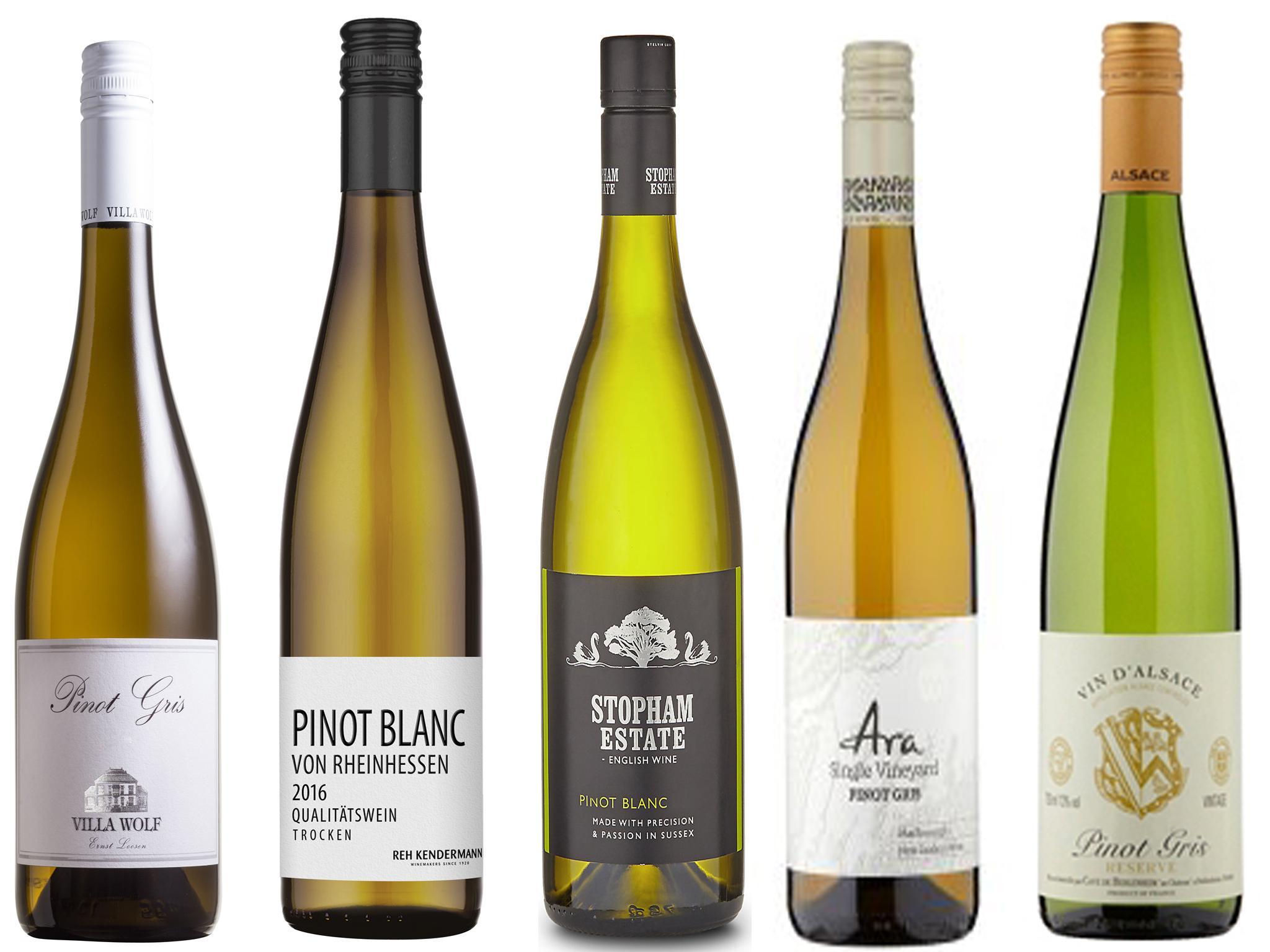The Independent's journalism is supported by our readers. When you purchase through links on our site, we may earn commission.
Wines of the week: Five pinot gris
Pinot grigio’s wishy-washy reputation doesn’t hold when trying complex wines made from the grape, and its cousin pinot blanc, from France, Germany and the New World

Northern Italy’s pinot grigio is sometimes unfairly maligned as producing often slightly insipid and characterless wines: fridge door whites that may only work in very hot weather, with undemanding, bland foods. Wines made from the pinot gris grape, a favourite of Alsace in France, in Germany and increasingly in the New World, are however different beasts, with complexity and character, able to partner more sophisticated and demanding foods. They are of course, just different names for the same grape.
Pinot gris and grigio are also both related to that difficult red grape, pinot noir, responsible of course for Burgundy, Champagne and some prestigious New World wines. The difference in style tends to be mainly down to whether the grapes are harvested early, to produce lighter and fresher wines, or later, when the grapes have hung on the vine in the autumn to develop richer, fuller flavours.
The best place to start exploring pinot gris is in the wines of Alsace, where it finds its truest expression with notes of smoke, honey, apricots and some tropical fruits, while retaining a distinctive dry and clean palate: think something close to viognier or oaked chenin blanc. Try the Cave de Beblenheim, Pinot Gris Reserve 2015 (£9.99 Waitrosecellar.com) from a highly reputable producer, with all white fish dishes. Still in Waitrose, there is also the even more assertive Ara Single Vineyard Marlborough Pinot Gris, (£10.99 Waitrosecellar.com) packed with flavours of pears and nectarines, suggesting that the Kiwis might be able to do for the grape what they have done for sauvignon blanc.
Back in Europe, Germany is increasing production of both pinot gris, known as grauburgunder and its cousin, pinot blanc, known as weissburgunder, creating wines such as the enticing Villa Wolf Pinot Gris 2015/16 (£10.99 Tanners-wines.co.uk) which is zingingly fresh and clean on the palate with flavours of lemongrass and lime but finishes with smoky, spicy notes. Fabulous as a palate-refreshing aperitif or with shellfish, crustacea and lighter pork dishes.
Pinot blanc, though generally less expressive than gris, also produces some excellent wines that should find favour with those who like whistle clean whites that pack some punch, without being oaky. From the Rheinhessen region of Germany, the Pinot Blanc Von Rheinhessen 2016 (£8.00 Tesco.com) is terrifically good value: bracingly dry, with fresh flavours of pears, elderflower and stone fruits, again with a subtle, smoky undertow and hints of citrus: think a smoked lemon. Again, shellfish dishes, such a prawns with pasta or in a risotto would be ideal.
Interestingly and promisingly, some English winemakers are now working with pinot blanc, where the characteristic flavours of the grape suit the climate and soils of the southern counties. One to savour is the Stopham Estate Pinot Blanc 2013 (£14.99 Waitrosecellar.com; £15.00 Marksandspencers.com) made in west Sussex and, like all these wines, ideal with almost any white fish or light white-meat dishes.
Subscribe to Independent Premium to bookmark this article
Want to bookmark your favourite articles and stories to read or reference later? Start your Independent Premium subscription today.





Join our commenting forum
Join thought-provoking conversations, follow other Independent readers and see their replies
Comments